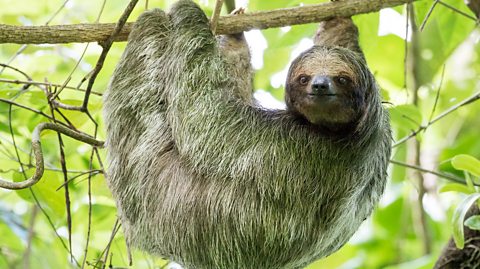Thereтs an old joke about a cheeky pupil handing their art teacher a blank piece of white paper at the end of a lesson.
When asked what it is, the pupil explains, matter-of-factly, that itтs a polar bear in a snowdrift.
While thatтs unlikely to score them top marks, it does highlight our awareness of the animal worldтs ability to blend in with its surroundings.
And sometimes, as ТщЖЙЙйЭјЪзвГШыПк Bitesize shows, that ability can be breathtaking.
The secret of the Sumatran tiger
Dan Simmonds is head keeper at London Zoo, which is home to more than 14,000 animals from across the world. He talked Bitesize through the camouflage techniques used by four of the creatures there, beginning with the mysterious Sumatran tiger.
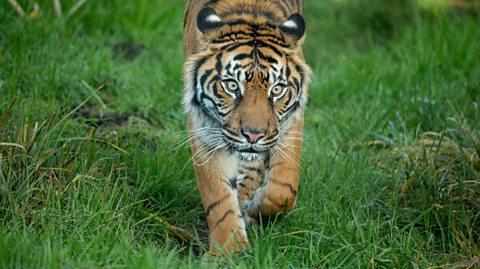 Image source, London Zoo
Image source, London ZooтThis is one of the most endangered big cats youтll ever see and, as the name would suggest, they come from the mangrove swamps of Sumatra,т he said.
And itтs the swamp setting which has naturalists both fascinated and baffled. The murky colours we associate with those surroundings are at odds with the striking oranges and blacks in the tigerтs stripes. That doesnтt stop the big cats from being absolute masters at camouflage - and, as Dan explained, nobody knows exactly how they do it.
He continued: тWhat are the colours of a mangrove swamp? Youтd probably, out of all the colours you could come up with, you wouldnтt come up with orangeтІ but the incredible thing is, whether theyтre at the zoo in a much greener environment, against more British-style foliage or basic grass or whether theyтre in the mangroves of Sumatran Indonesia, they disappear. Itтs absolutely incredible.
тThatтs just how theyтve managed to evolve, theyтre an ambush predator so they rely on being able to camouflage themselves, otherwise they would literally starve to death.т
Sumatran tigers are also apex predators, meaning they are not naturally preyed upon by other animals for food. Their different stripes make each individual tiger at the zoo identifiable to the conservationists there, but not any easier to find when the cats choose to hide - a mystery Dan attributes to nature, тalways being able to surprise us and stay one step ahead of us.т
He added: тWe challenge visitors to spot a tiger. Weтll say, тlook, itтs thereт - and they canтt see it.т
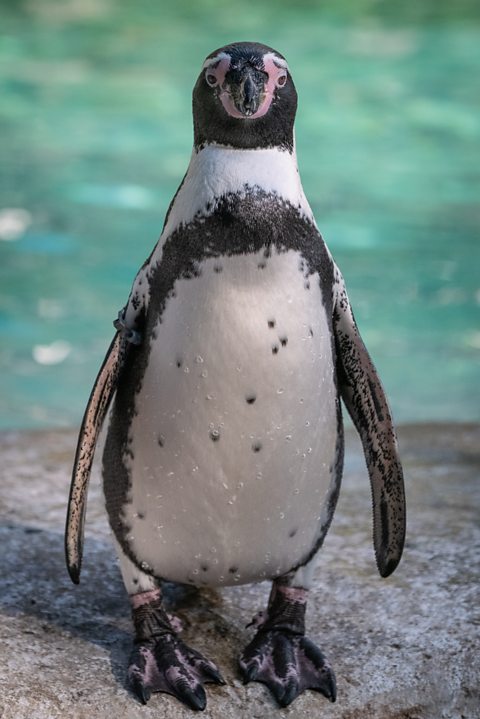 Image source, London Zoo
Image source, London ZooWhy a penguinтs tuxedo is more than just a suit
A colony of penguins waddling in unison can be one of natureтs more loveable sights. Their bodies are covered in tightly packed feathers, mainly black, with white fronts. When Dan and his colleagues are introducing the colony of 70-plus Humboldt penguins at London Zoo to visitors, they often refer to the birdsт тlittle tuxedosт.
Those тsuitsт are not just for looking natty in the water, either. They provide a surprising form of camouflage too. Dan said: тThe white belly and the black back are counter-shading. If youтre swimming along as a penguin and your white bits are facing downward, itтs camouflage against the sky from a predator looking upwards.т
But thatтs not all. Dan continued: тIf youтve got your back facing up to the sky against the deep dark ocean, youтre going to blend in there, so itтs counter-shading - a safety tuxedo. Itтs a really nice thing that penguins have. We try not to be emotive, but sometimes you looks at the penguins and think that theyтre vulnerable - but theyтre not. Nature and evolution protects them through camouflaging.т
 Image source, London Zoo
Image source, London ZooThe crocodile lurking in the murky depths
Another apex predator on the list is the Philippine crocodile. Unlike the Sumatran tiger, the "muddy-ish, brown-ish" colour of the reptileтs skin that Dan describes matches well with its marsh-like surroundings. At London Zoo, the team includes an enclosure design officer, who works to replicate the animalтs surroundings as close to their natural habitat as possible in the middle of a busy city.
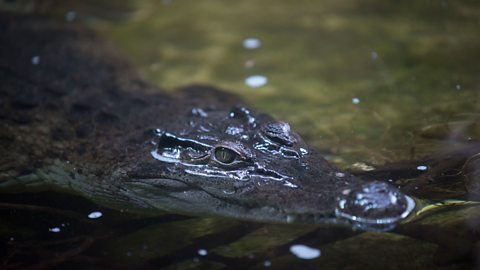 Image source, London Zoo
Image source, London ZooHe said: тWhen people come to the zoo, itтs interesting to watch them. In the reptile house, right at the front of the viewing glass, the crocodiles disappear. They have an ability to blend in due to the colour and texture of their skin. If we tried to do it as humans we probably couldnтt do it, but nature does it so well.т
This seemingly effortless blending makes it easier for a Philippine crocodile to ambush its prey. тThis is one youтll normally see on social media,т Dan explained. тA creature is drinking from the water and a crocodile will launch itself at them and the animal has been completely oblivious, [the crocodile has] been invisible on the shoreline.т
Why is that stick moving?
The tirachoidea is one of the stick insects housed at London Zoo. Native to South East Asia, it could be even more difficult to spot than a Philippine crocodile, even if it isnтt planning to pounce on an unsuspecting meal.
The insect looks remarkably like a twig but doesnтt just leave it at the cosmetic level - the tirachoidea behaves like one as well.
 Image source, LONDON ZOO
Image source, LONDON ZOOWhile resting on a twig, it moves as though it is swaying in the wind, mimicking the behaviour of the tree surrounding it. Thereтs variety within the species as well. Dan said: тThe male tirachoidea are green with orange stripes, while the wingless females are green with brown dots.
тItтs also known as Cantorтs stick insect and threats that it faces include primates, bats and reptiles.т
Itтs also a very large insect. For the zooтs annual weigh-in and measurements procedure, a tirachoidea has to perch on a particularly long ruler.
This article was published in October 2023.
Five fun behaviours we have in common with animals
Do animals share our creature comforts? Find out with these five fabulous animal facts.
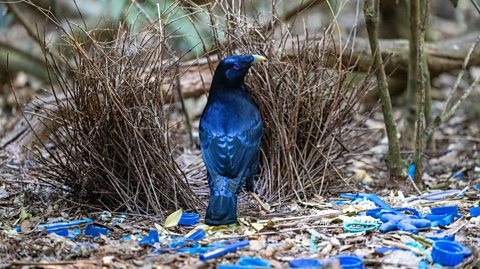
The amazing ways animals communicate with each other
Explore the ways monkeys, frogs, slugs and birds keep in touch
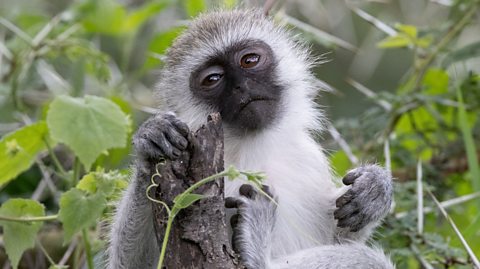
Can you wrap your head around these unbelievable wildlife facts?
From the cute, to the gross, to the downright surprising, ТщЖЙЙйЭјЪзвГШыПк Bitesize takes a look at four incredible wildlife facts.
